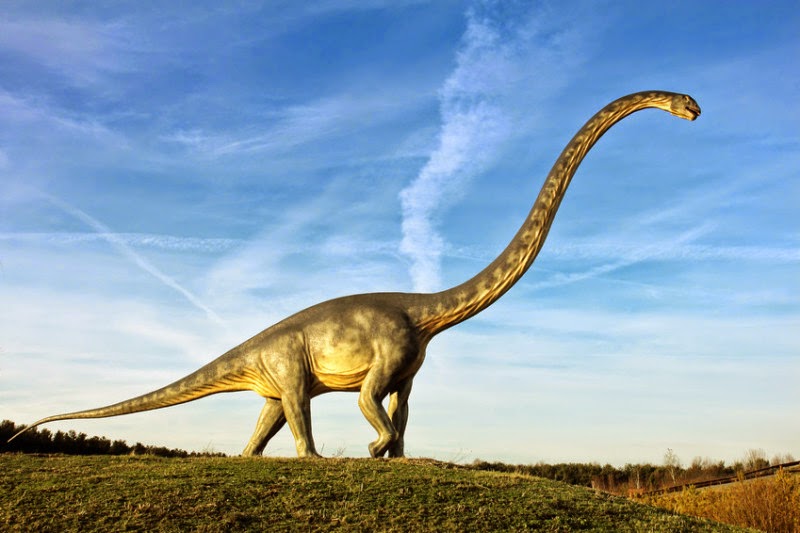
If you thought the largest dinosaurs to have walked the Earth produced the biggest eggs, you’d be mistaken. Scientists have discovered that both individual egg size and clutch size for the sauropods — which includes Diplodocus — were a lot smaller than might be expected for such enormous creatures.
A team of scientists have suggested reasons why the largest dinosaurs ever to have walked the Earth produced smaller eggs than might be expected.
One of the defining characteristics of the dinosaurs was their vast size, and the sauropods — a suborder of dinosaurs which includes the famous Diplodocus — were the largest of all.
Yet scientists have been puzzled at the relatively small size of sauropod eggs. Both individual egg size and clutch size are smaller than might be expected for such enormous creatures, relative to modern egg-laying animals.
Researchers have now concluded that the substantial incubation time required for sauropod embryos to develop and hatch may have been an important constraint and that this could explain the small individual size of sauropod eggs.
The findings are published in the summer 2014 issue of the Paleontological Society’s journal, Paleobiology. The team, which included biologists from the University of Lincoln, UK, and George Mason University, Virginia, US, with lead researcher Professor Graeme Ruxton from the University of St Andrews, used data from modern birds and reptiles to investigate factors affecting clutch size in this group of dinosaurs.They estimated that the time from laying to hatching of eggs, which were incubated in underground nests, was between 65 and 82 days.
This long incubation time increases the risk of predation, which coupled with the relatively low temperatures expected in the nest, may have been a significant factor in limiting the egg and clutch size.
Having larger eggs than are in the fossil record may have been advantageous because of larger hatchling size but this may have been outweighed by the increased risk of predation during the egg stage.
Dr Charles Deeming, from the School of Life Sciences, University of Lincoln, UK, said: “We think that a long incubation period of sauropods is likely to have led to very high mortality through predation. We suggest that the females laid their eggs in small clutches, possibly in different nesting sites, as an adaptive strategy to mitigate the high predation risk associated with long time of exposure in the egg stage.”
Professor Ruxton, from the School of Biology at the University of St Andrews, added: “The living bird with the largest eggs, the ostrich, has to incubate its eggs for 42 days; during which time many eggs are lost to predators. An ostrich weighs about 100kg and lays a 1.5kg egg; a sauropod dinosaur might be 50 times heavier than an adult ostrich but its eggs were only a little heavier than an ostrich egg. Some people might find it a bit disappointing that giant dinosaurs didn’t lay equally giant eggs — but it’s very satisfying to think that we might finally understand why.”
There may also have been a finite limit to the period over which environmental temperatures are high enough for egg development.
The team believe their conclusions could be extended to other groups of dinosaurs.
Journal Reference:
Graeme D. Ruxton, Geoffrey F. Birchard, D. Charles Deeming. Incubation time as an important influence on egg production and distribution into clutches for sauropod dinosaurs. Paleobiology, 2014; 40 (3): 323 DOI: 10.1666/13028
Note : The above story is based on materials provided by University of Lincoln.










